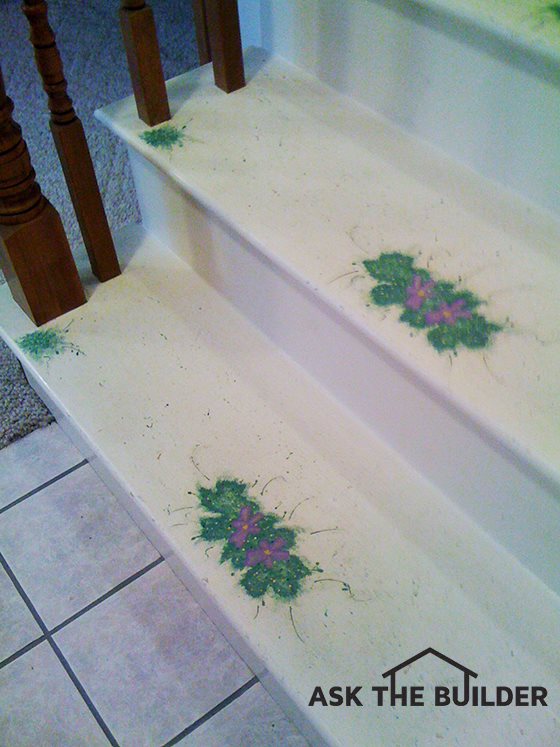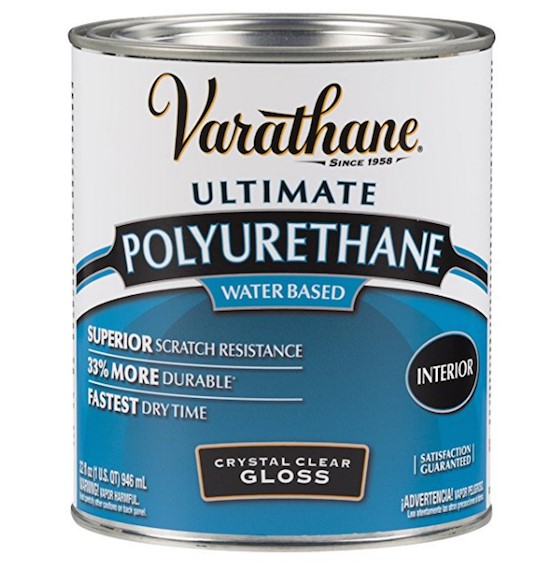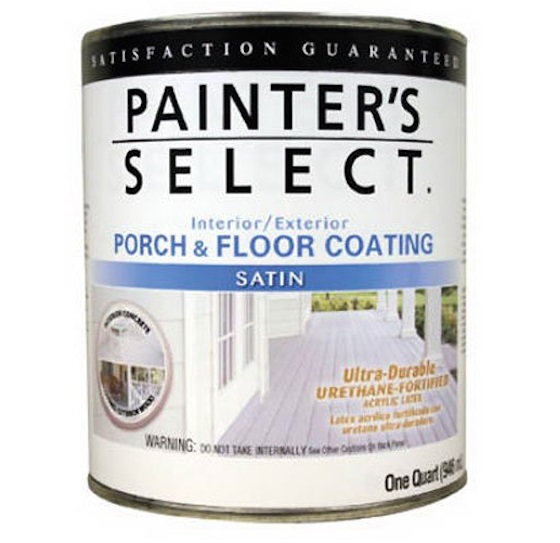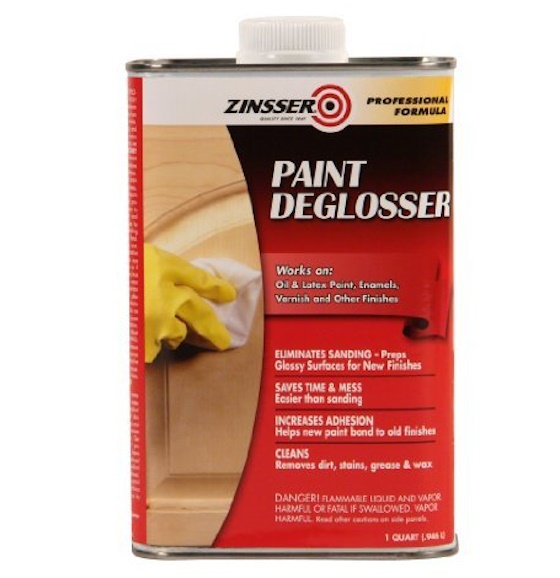Painting Steps

These steps are painted and have a great stencil pattern on each tread. There are highlights as well on the ends of each tread. ©2017 Tim Carter
Painting Steps TIPS
- Paint works on floors - basketball!
- Buy porch paint - it's the best
- Practice stenciling on scrap wood
- Clear urethane protects paint
- CLICK HERE to Get Tim's FREE & FUNNY Newsletter!
DEAR TIM: Yesterday I stopped by a friend’s house and she was painting steps. These were wood steps leading to her basement.
It looked fantastic, as she was using a stencil. What’s the best paint for steps?
How do you keep the steps looking great for years, as I feel the paint will get scuffed and look horrible in no time. Please give me as many tips as possible, because I want my steps to look better than my friends. Pam W., Green Bay, WI
DEAR PAM: There’s no need to make this into a competition. In fact, I hope you share what you discover so that your friend’s steps stay looking great for years.
Basketball
Let’s talk about painting steps and painting floors. I can see why you might be worried about durability of standard paint, as paint is typically a softer substance and can scratch fairly easily.
But if you’re a fan of indoor sports, you’ve seen painted floors that take enormous abuse and probably never even thought about what you were looking at.
For example, think about the paint on basketball, volleyball and even badminton courts. Those are almost always hardwood floors that get large sections painted or at the very least lines and logos.
CLICK HERE to get FREE & FAST BIDS from local painters that can paint your steps.
Urethane Coating
The reason they look good year after year is simple. The paint is protected by numerous coats of clear finish that’s no different than what you’d put on your stained hardwood floors.
Rapid Curing
You can use just about any paint for your steps, but it’s best if you can find one that cures quickly. Years ago, oil-based paints tended to cure faster than latex paints, but paint chemistry has advanced such that many latex paints have a rapid cure time.
Curing is the process that paint undergoes as it gets hard. Understand that there’s interesting chemistry happening when paint dries. It goes from a liquid material to one that’s pretty hard.
Doing this liberates any number of chemicals into the air. This transformation from liquid to solid happens during the curing process. The trouble is it can take days or weeks to happen.
Porch Paint
I suggest getting a paint that’s high quality. There are paints made to be walked on. They're some of the best around. Often on the label they say they're for porches. CLICK HERE to see an assortment of excellent porch paints that can be tinted just about any color.
More $$$ = Better Paint
Price is usually a great barometer of quality. Keep in mind that paint is simply colored glue, so you want a really good glue that will stick to your steps. Great glues or adhesives in the paint tend to be more expensive.
CLICK HERE to get FREE & FAST BIDS from local painters that can paint your steps.
Test First
I highly recommend taking some scrap wood to test what you’re going to do. Some of the most unique steps I’ve seen painted are ones where the entire set of steps is painted a base color such as an off white with the colored stencil patterns applied as highlights.
You want to practice on these scrap pieces of wood until you really refine the process of working with stencils or even free-hand painting of patterns.
Stand Back
Be careful about being too critical of your work. Always stand back 4 or 5 feet to view the finished work.
You’ll be surprised how artwork you see regularly doesn’t really have tremendous detail. Your brain tends to make any missing connections that the artist left out.
Read The Label
When you get ready to start painting the actual steps, read carefully the label on your paint can or cans. Follow the directions to the letter. It’s very important that the surfaces you’re painting be clean and dust free.
Use regular soap and water to wash the steps making sure you rinse and dry them. If the steps have a glossy finish, you need to rough them up so the new paint bonds well. You can use sandpaper or liquid deglossers.
Water-Base Urethane
After your new paintwork is complete, you need to protect it. I prefer to use clear water-based urethanes for this. The water-based urethanes tend to stay clear for years.

I've had excellent results with this clear water-based urethane. It dries FAST. CLICK THE IMAGE TO ORDER SOME NOW.
Oil-based urethanes had a strong tendency to develop a golden patina. This may appeal to you. If so, see if you can still find oil-based urethanes. Laws controlling volatile organic compounds (VOCs) have really stifled the production of these products.
Four Coats
Because steps take so much abuse, I’d apply no less than four coats of urethane. The water-based products have a quick dry and re-coat time, and it’s possible you may be able to apply all the coats in one day if you assist the drying process.
Be sure to read the instructions on the urethane can to get the best results.
Practice Makes Perfect
I can’t emphasize enough the importance of practicing using the stencil patterns. You want to make sure the results on each step are fairly uniform, so develop a technique you can repeat as you work your way up or down the steps.
Traffic Flow
The biggest problem you’ll have, if the stairs are the only way up and down in your home is determining how to maintain a flow of traffic while the work is going on. Be very careful of people wearing socks as the fibers from the socks can bond to tacky or uncured paint or urethane.
Farm Them Out
You may want to send as many family members as possible to a friend’s or relative’s house while you ramrod this project. Less feet around the house will ensure success!
CLICK HERE to get FREE & FAST BIDS from local painters that can paint your steps.
Column 820


4 Responses to Painting Steps